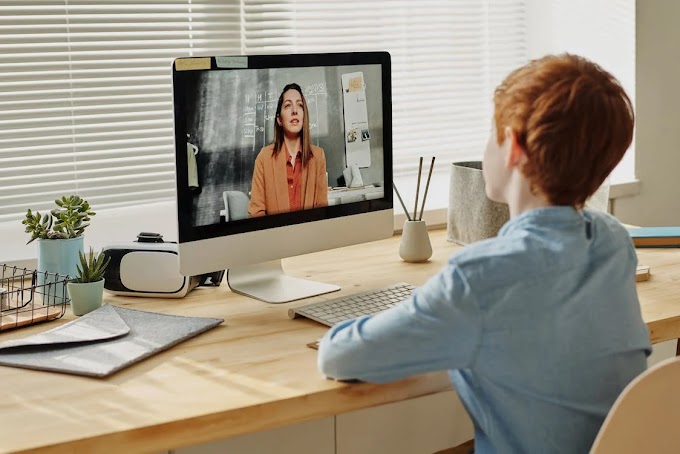How to Create GIFs and Work with Images in MoviePy
MoviePy is a powerful Python library designed for video editing, and it also provides robust features for working with images and GIFs. Whether you’re looking to convert a video clip into a GIF, manipulate images, or integrate static images into video projects, MoviePy makes these tasks straightforward and efficient.
In this blog post, we'll explore how to work with images and GIFs using MoviePy, covering everything from creating GIFs from video clips to editing images and combining them with video content in your projects.
Converting Video Clips to GIFs
One of the most popular uses of MoviePy is converting video clips into GIFs. Whether you want to share a short segment of a video or create a looping animation, MoviePy makes it easy to extract and save a portion of your video as a GIF.
Here’s how you can convert a video clip into a GIF:
Step 1: Load the Video and Define the Section for GIF Creation
To create a GIF, you first need to load the video file using VideoFileClip and specify the part of the video you want to convert.
from moviepy.editor import VideoFileClip
# Load the video clip
video_clip = VideoFileClip("example_video.mp4")
# Select a section of the video to convert into a GIF (from 5 to 10 seconds)
gif_clip = video_clip.subclip(5, 10)
# Resize the GIF if necessary (optional)
gif_clip = gif_clip.resize(height=300) # Resize to 300px height
# Export the clip as a GIF
gif_clip.write_gif("output.gif")
In this example:
- We load a video and select a portion of the video from 5 seconds to 10 seconds (
subclip(5, 10)). - The GIF is resized to a height of 300 pixels using the
resize()method. - Finally, the
write_gif()function is used to save the selected section as a GIF.
Editing and Manipulating Images
MoviePy allows you to edit images in various ways, including resizing, rotating, adding text, and more. Let’s look at how to manipulate images before integrating them into video projects.
Step 2: Working with Static Images
You can load and manipulate images using the ImageClip class. Here’s how to load an image, apply some basic transformations, and save it:
from moviepy.editor import ImageClip
# Load an image
image = ImageClip("example_image.jpg")
# Resize the image
image = image.resize(height=200)
# Rotate the image (optional)
image = image.rotate(45) # Rotate the image 45 degrees
# Set the duration for how long the image will display
image = image.set_duration(5)
# Write the manipulated image to a video file (or image)
image.write_videofile("output_video.mp4", codec="libx264")
In this example:
- The
ImageClipclass loads an image file. - The image is resized to a height of 200 pixels and rotated by 45 degrees.
- The
set_duration()method sets how long the image will appear in the video. - Finally, the manipulated image is saved as a video.
You can also export the image as a standalone image (e.g., using image.save_frame()), but in this case, we’re turning it into a short video clip.
Combining Images with Video
Sometimes you may want to overlay images on top of video clips or even display an image at a certain point during the video. MoviePy provides an easy way to combine images with video clips, allowing for effects such as logo overlays or introducing static elements in the middle of a video.
Step 3: Overlay an Image on a Video
Here's how you can overlay an image (e.g., a logo) on a video:
from moviepy.editor import VideoFileClip, ImageClip, CompositeVideoClip
# Load the background video
video_clip = VideoFileClip("background_video.mp4")
# Load the image to overlay (e.g., a logo)
logo = ImageClip("logo.png")
# Resize the logo and set its position
logo = logo.resize(height=100).set_position(("right", "top")).set_duration(video_clip.duration)
# Combine the video and the image
final_video = CompositeVideoClip([video_clip, logo])
# Write the final result to a file
final_video.write_videofile("output_with_logo.mp4", codec="libx264")
In this example:
- The background video is loaded.
- The logo image is resized and placed in the top-right corner of the video.
- The
CompositeVideoClipclass is used to overlay the logo on top of the video. - The final video is written to a file, complete with the logo overlay.
Creating GIFs from Image Sequences
MoviePy allows you to create GIFs from a sequence of images. This can be useful when you have a series of images that you want to animate. You can combine images into a video and then convert it into a GIF.
Step 4: Create a GIF from Multiple Images
Here’s how you can take a series of images, combine them into a video, and then convert that video into a GIF:
from moviepy.editor import ImageSequenceClip
# Load the images (assuming they are named frame1.jpg, frame2.jpg, etc.)
image_files = ["frame1.jpg", "frame2.jpg", "frame3.jpg", "frame4.jpg"]
# Create a video clip from the image sequence
image_sequence = ImageSequenceClip(image_files, fps=10) # 10 frames per second
# Convert the video clip to a GIF
image_sequence.write_gif("animated_output.gif")
In this example:
- The images are loaded into a list (
image_files). - An
ImageSequenceClipis created with the images, and the frame rate is set to 10 frames per second (fps=10). - The sequence of images is then converted into a GIF using the
write_gif()function.
Conclusion
MoviePy is an incredibly versatile tool for working with images and GIFs, allowing you to easily convert video clips into GIFs, manipulate images, and combine images with video. Whether you're creating a GIF from a video, overlaying logos, or animating a sequence of images, MoviePy provides a simple yet powerful interface to bring your creative ideas to life.
With just a few lines of Python code, you can create stunning GIFs, seamlessly integrate images into videos, and build custom animations that would otherwise require complex software or a steep learning curve. Now that you’re equipped with the basics, start experimenting with your own projects and see where your creativity can take you!







0 Comments